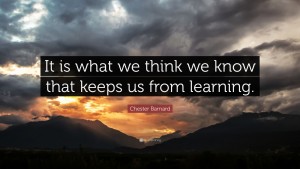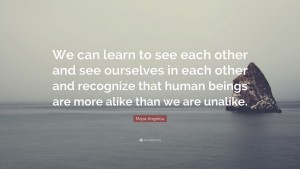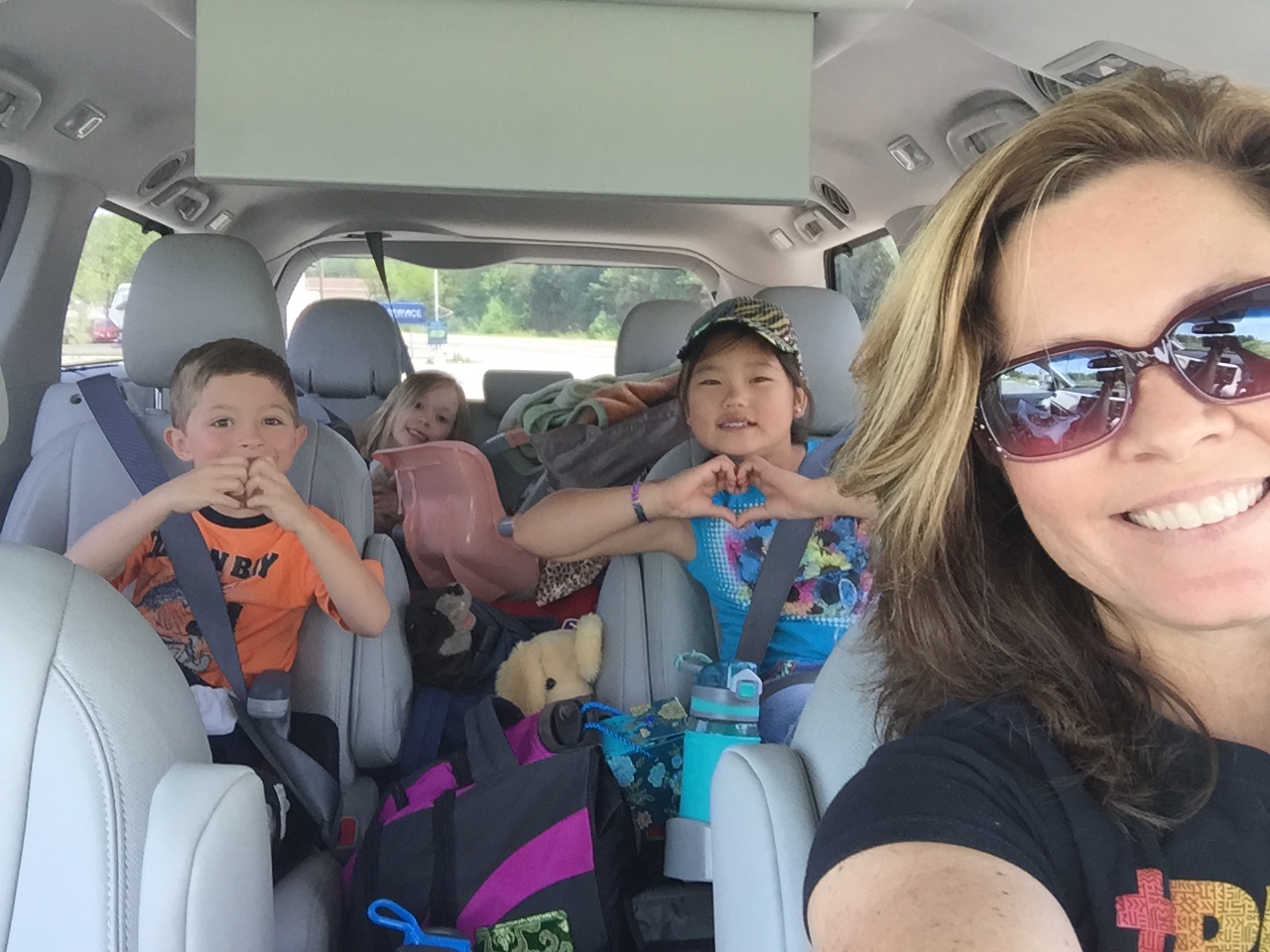You never noticed it before. Maybe you’ve been looking at this thing or this person for years. Suddenly, someone points out a detail that you missed . . . something obvious, like a symbol hidden (in plain sight) in a logo, how a particular mannerism reminds you of someone. And now you can’t unsee it. It’s always a bit irritating when this happens, and I think, “How did I not see this?” Or maybe, “I wish I didn’t know – now I cannot not see it.”
I remember many of these moments in college – almost every class unveiled new ways of seeing familiar things. One memorable eye-opener came in a sociology class where a guest speaker did a slide show about the sexist nature of advertising and how women are not only sexualized, but demeaned (by making them behave in a sexual way with inanimate objects, like a mop or a beer bottle, for example). Slide after slide, I was astonished at how I had seen these ads in magazines and on TV, yet I had never really noticed how sexual they were. After this presentation, I started to see it constantly. I felt ignorant for not noticing before, and wondered how my lack of consciousness had allowed unconscious manipulation.
Back then, when I was barely 20 years old, it seemed excusable to miss such obvious things, but I’m closer to age 50 now, and I am fully aware that this still happens. The challenge is to acknowledge it and not get stuck in only one way of “seeing.” It can happen in any aspect of life, but at this moment in history, it seems that I’m particularly susceptible to blind spots, when it comes to politics and religion.
I’ve always been a theology nerd, but only dialed into politics (in a purposeful way) the past four years, when I feel like I was forced to pay attention. I have been, and continue to be, utterly mystified by how differently people can see things. My conservative and liberal friends can look at the same set of “facts” (used loosely here because there are so many “alternate facts” floating around) and see a completely different reality. Why is this?
I recently stumbled upon a podcast that highlights the biases that act as barriers for us, the things that keep us from seeing things clearly. I have read about a few of these in behavioral economics books, oddly enough, but have never seen them put together so succinctly. I found it shocking, so of course, I wanted to share it!
It makes me wonder how we ever learn anything new. There are so many hurdles.
Brian McLaren moderates a podcast called “Learning How to See” that is wonderful and enlightening, but also disturbing, as you become aware of the many ways that protecting our egos makes us blind to reason. The efforts we make to avoid discomfort, to remain part of the “tribe,” is distressing (although, understandable). But it explains SO much.
Here are thirteen biases that affect the way we receive or the way we see (from episode 1 of the “Learning How to See” podcast*).
- Confirmation bias: The human brain welcomes information that confirms what it already thinks and resists information that disturbs or contradicts what it already thinks.
- Complexity bias: The human brain prefers a simple lie to a complex truth.
- Community bias: The human brain finds it very hard for you to see something your group doesn’t want you to see. In other words, we put tribe over truth. This is also known as social confirmation bias.
- Complementarity bias: If people are nice to you, you’ll be open to what they see and have to say. If they aren’t nice to you, you won’t. We mirror back the attitude we receive from other people, and that makes us open or closed to what they have to say, whether it’s true or not.
- Contact bias: If you lack contact with someone, you won’t see what they see.
- Conservative/liberal bias: Our brains like to see as our party sees, and we flock with those who see as we do.
- Consciousness bias: Our brains see from a location, a person’s level of consciousness, or we could say their cognitive maturity makes seeing some things possible and seeing other things impossible.
- Competency bias: This is really an interesting one. Our brains prefer to think of ourselves as above average. As a result, we are incompetent at knowing how incompetent or competent we really are.
- Confidence bias: Our brains prefer a confident lie to a hesitant truth. We mistake confidence for competence, and we are all vulnerable to the lies of confident people.
- Conspiracy bias: When we feel shame, we are especially vulnerable to stories that cast us as victims of an evil conspiracy by some enemy or other. In other words, our brains like stories in which we’re either the hero or the victim but never the villain.
- Comfort, or complacency, or convenience bias: Our brains welcome data that allows us to relax and be happy, and our brains reject data that requires us to adjust, work, or inconvenience ourselves. We could say the brain is lazy, but it’s very fast at being lazy.
- Catastrophe, or normalcy, or baseline bias: Our brains are wired to set a baseline of normalcy and assume that what feels normal has always been and will always remain. That means that we minimize threats, and we’re vulnerable to disasters, especially disasters that develop slowly.
- Cash bias: Our brains are wired to see within the framework of our economy, and we see what helps us make money. It is very hard to see anything that interferes with our way of making a living.
Amazing, isn’t it?
Even if we became more aware of the first three biases in our own lives, it could be transformative.
I don’t think it’s an exaggeration to say that, no matter what happens next in politics and religion, the only way we can find common ground, have any hope at unity, have any hope of acting collectively for the good of the country, is to challenge ourselves to really “see” each other.
And seeing things clearly requires some discomfort, some forgiveness, widening your circle, suspending assumptions, putting yourself in someone else’s shoes, and stepping into the scary world of uncertainty.
But it’s worth it. And it is the hard work that God requires of us. As Bishop Michael Curry says, “Love is a verb: It’s an action, with force and follow through.” (Love Is the Way) Love is the way God helps us discover our blind spots and see more clearly.
And if you replay Jesus’ parables, His Sermon on the Mount, His questions, His actions, the way He treated people, it is clear that He came to upend the familiar and to help us see things in a new way.
Jesus challenged all of these human biases and it’s why His life and His message is, still today, just as countercultural, shocking, and reckless in all the right ways.
Our blind spots and biases matter. It might seem like they protect us, but if we are not careful, they will keep us small, they will insulate us from the very things and people who can help us grow and expand.
“By teaching “Do not judge” (Matthew 7:1) the great teachers are saying that you cannot start seeing or understanding anything if you start with no. You have to start with a Yes of basic acceptance, which means not too quickly labeling, analyzing, or categorizing things as in or out, good or bad, up or down. You have to leave the field open, a field in which God and grace can move. Ego leads with no whereas soul leads with Yes.
The ego seems to strengthen itself by constriction, by being against things; and it feels loss or fear when it opens up. No always comes easier than Yes, and a deep, conscious Yes is the work of freedom and grace. So the soul lives by expansion instead of constriction.” (Yes, And . . ., Richard Rohr)
” . . . a deep, conscious Yes is the work of freedom and grace.” We will never be free of biases and blind spots, but once we are aware of them, God can help us see more clearly. His love and grace can help us find the freedom to live a life of YES.
*Link to the “Learning How to See” podcasts: https://cac.org/podcast/learning-how-to-see/


 Follow
Follow share via email
share via email

Wow! Deep stuff. I have a bias toward anything and everything. Like the old actor W C Field said about prejudice,
“ I am not prejudice, I hate everybody equally.” I guess I could say. “ I am not bias, I do not believe anything anyone says” I think what you shared is true, but I do not think it applies to me.. (HA)